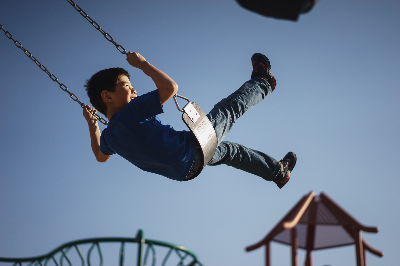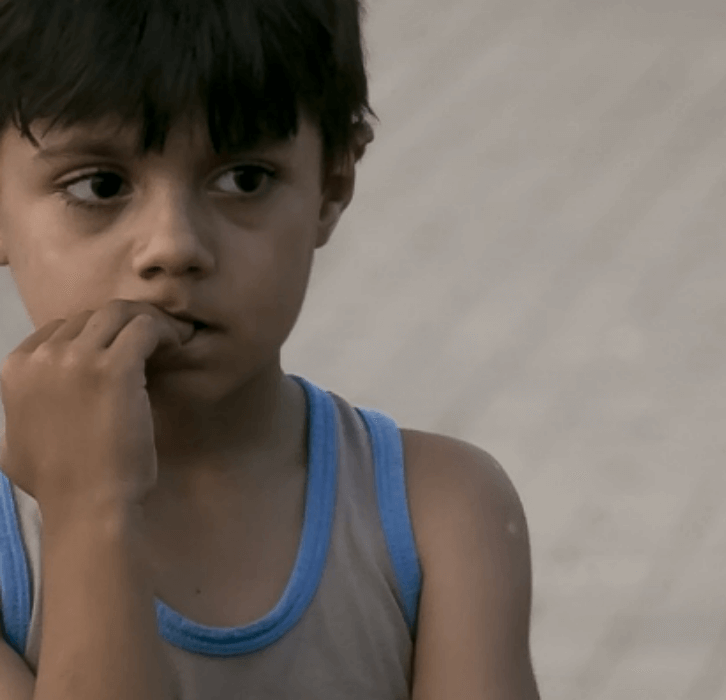To grow and learn, we must try new things. The process of struggling, tolerating failures, and prevailing builds confidence and the deep feeling of “I can do it.” But we–especially children–lose the positive aspects of struggle and stress when the amount of stress, especially traumatic stress, becomes too great and/or sustained.
Persistent and long-lasting stress on the mind and body caused by overwhelming emotions leads to traumatic stress, a condition characterized by a nervous system in overdrive. The brain’s emotional centers lock into a state of DANGER and the body operates in fight, flight, or freeze.
Traumatic stress feels awful. The body tenses and succumbs to other physiological changes that can lead to digestive problems and headaches, for example. Furthermore, children overwhelmed by emotions can’t engage positively in learning. Curiosity about the outside world arises from a calm nervous system, not one that’s in a state of high alert.
Think about what it feels like when you are terrified. Do you feel like learning, engaging in life, socializing? No! When children and adults alike are terrified, we want to run away, hide, and find safety again as soon as possible. When we are scared, we feel vulnerable and insecure. After a while, we feel hopeless, numb, even dead inside. Depression, chronic anxiety, substance abuse, isolation, and aggression, all constitute symptoms of traumatic stress.
Here are 7 ways you can help a child experiencing traumatic stress:
1 – Be there.
John Bowlby, the father of Attachment Theory, taught us that children need to feel safe and secure to thrive. It may seem elementary, but the first aspect of creating safety for a child is being there to establish a soothing connection.
Children with traumatic stress are scared, even if, like bullies or otherwise aggressive children, they don’t appear so on the outside. Even when there is push-back from the child, simply having someone in the room can be a comfort. Being alone heightens fear.
2 – Be quiet and gentle.
Children suffering traumatic stress are fragile and prickly due to their hyper-aroused nervous systems. We live in a left-brain dominant culture. This means we don’t talk nearly enough about conveying emotional safety through right-brain communications, the non-verbal cues we unconsciously pick up from one another. These include tone of voice, eye contact, and body language.
Adults should strive to speak in a gentle, calm voice with soft eyes and slow movements to avoid jarring or startling a child. Think about how you like to be approached when you are upset.
3 – Play with the child.
Play feels good for all people, no matter their age. According to polyvagal theory, play stimulates the social engagement system of the vagus nerve, the body’s largest nerve, and therefore relaxes the entire nervous system.
Play helps a child feel better and calm down, in part because it involves so much more than a game. It fosters safe, positive connection through movement, smiling, and speaking with a cheery and playful tone of voice. All of this calms a child.
It may seem counterintuitive to initiate play with a child under stress, but if the child is receptive, it gives the nervous system a chance to calm down, even if only for a moment.
4 – Help children name their feelings.
Putting language on emotions helps calm down the nervous system. We can use stories, our own personal stories or ones we create, to help a child put language on their emotions. For example, a mother could share with her traumatized child, “When I was little, my mother went away for a long time. She was sick, so she had to go to where doctors could help her. Even though I understood why she went away, I was still sad and scared. And, sometimes I even felt angry at her for not being there for me. All those feelings are natural.”
There are many ways to help children put words on their feelings. You can show them drawings of many faces with feelings and they can point to the ones they relate to. You can also use games, drawings, and puppets.
5 – Help children express their feelings.
Emotions contain impulses that generate biological energy. This energy needs to be expressed so it doesn’t get pent-up inside. For example, if a child is in danger, their brain will trigger fear. Fear sends signals throughout the body, setting off impulses to run. But if a child is in a situation where they cannot run to safety, all that energy gets trapped in the body and leads to symptoms of traumatic stress.
You can help children release their emotions through art, play, stories, fantasy, puppets, or by helping them verbally or physically express themselves. Feel free to experiment and take your cues from the child for what works best. Cues that you are helping a child include expressions of relief, happiness, calm, and a desire to play and connect more. If an intervention is not helping, a child’s face and body will show more tension, sadness, anger, rigidity, and withdrawal.
6 – Touch (providing the child accepts it).
Holding, rocking, stroking, hugging, and swaddling can help soothe a stressed nervous system. Again, take your cues from the child. If they don’t like something, don’t do it. This is especially important when it comes to touch. You can tell by the way the child looks and reacts if they are responding positively or negatively. If they stiffen, it’s a protest. If they relax and soften, that’s a green light.
7 – Reassure the child.
A little reassurance goes a long way. Be explicit! Say things like, “This feeling is temporary,” “You are not alone,” and “It’s not your fault.”
Don’t lie. Look for truthful ways you can reassure them that they are safe now and will not be alone. Explain what has happened and what is currently happening. When they feel bad, children internalize shame, a sense that they are bad or unworthy. Reassuring children that they didn’t do anything bad and that they matter helps.
Humans are wired for connection and thrive in conditions of safety and security. When safety and security are compromised, we must do everything we can to restore a child’s felt sense of safety and security as fast as possible. There are many educational resources available to adults, like the Change Triangle, that teach how to minimize stress and foster recovery in children. Remember, your efforts matter.




